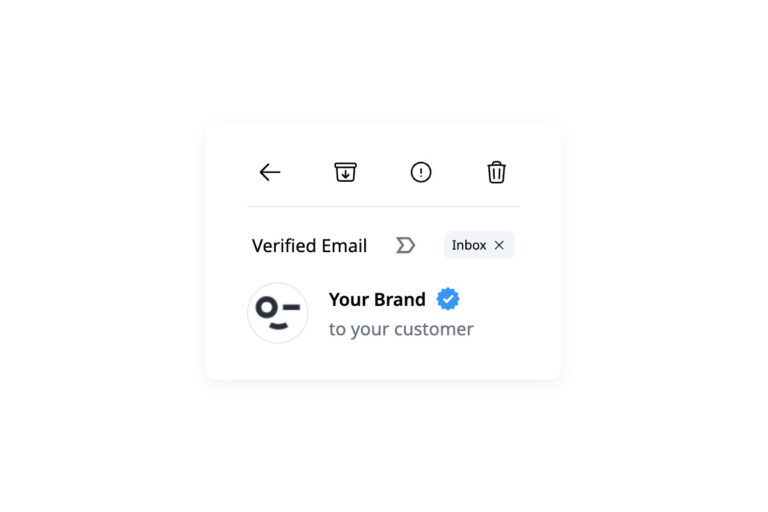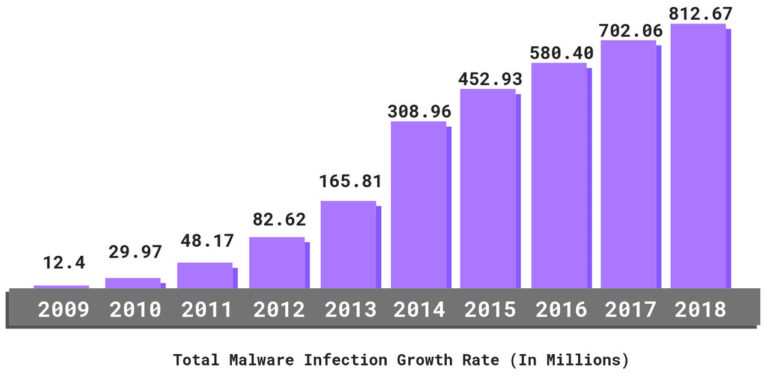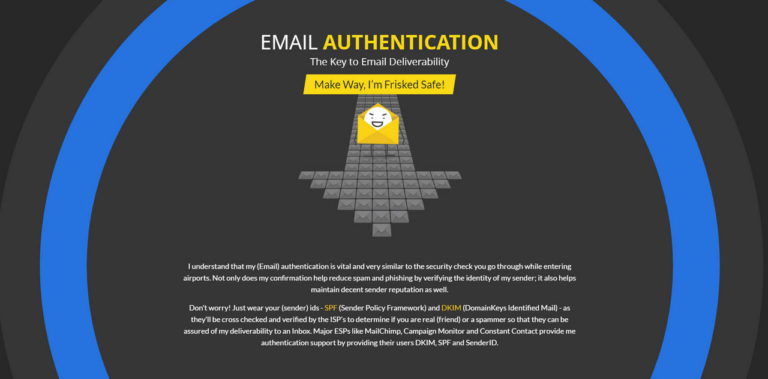Not all tools that sales teams use to generate leads are marketing-related. Some of them are high-tech specs that may sound frightening at first sight but prove highly effective at further familiarization. One of such tools is reverse DNS, or to be more precise reverse DNS lookup.
Reverse DNS lookup is the secret ingredient that helps professional marketers broaden the target market, reach prospects and increase conversions. Even though it seems like a complicated procedure, in fact, any non-tech person can handle it with the right set of tools and guides. It is straightforward in principle and requires you to follow the basic routine.
Let us find out what is reverse DNS, how it can help your company, what tools to use in order to perform reverse DNS lookup and how to set it up without extra tech skills.
What Is Reverse DNS?
Before moving into what is reverse DNS, you should understand two important things.
First of all – DNS. DNS is the Domain Name System. Simply put, it is the phonebook of the Internet. Since both humans and machines should use this phonebook, it has a unique mechanism that turns domain names into IP addresses and vice versa.
Second, there are two types of DNS lookup: forward and reverse. We are going to consider the reverse DNS lookup since it is more meaningful and provides some good insights for the marketing team.
Reverse DNS resolution is the querying technique done on the DNS side. It determines the hostname based on a given IP address. In contrast, the forward DNS lookup retrieves the IP address using a hostname.
The vital thing to note about reverse DNS is that even though IETF claims that every domain should be capable of doing a lookup, in fact, not all IP addresses have a reverse entry.
The reason for that is banal; this mechanism is not crucial for DNS to function correctly. Therefore, reverse DNS lookup is only a recommendation, not a requirement.
However, in most cases, especially when it comes to popular or serious companies, reverse DNS lookup can be easily done.
Reverse DNS Lookup
How Does Reverse DNS work?
The principle of reverse DNS lookup is simple. Using information from the PTR record, the system goes through the domain name registry and registrar tables to fetch the domain name. This process involves several steps:
- The system looks for a PTR record in the server.
- If the record is found, it retrieves the IP address and appends it to ‘.in-addr.arpa’ (or in the case of IPv6 to ‘.ip6.arpa’) in order to get the location of the file with the domain’s information. After that, it retrieves the hostname.
- If the PTR record is not found, it cannot match the domain and IP address, returning an undefined result.
The reverse DNS lookup comes in handy in many situations. For instance, it is used to track who visits the website or who is looking at what. Any good marketer can translate this data into warm leads and sales. Therefore, many organizations, especially those that work in the B2B niche, employ it on a daily basis.
Let us consider some good reasons why reverse DNS is important.

The basic principle of reverse DNS Lookup
Why Does Your Company Need Reverse DNS Lookup?
Even though reverse DNS lookup is not crucial for DNS to work, it is still a highly regarded querying technique that should be a part of every marketing toolbox. Thanks to its perfect tracking mechanism, it gives companies from various niches an opportunity to get hold of the bulk of helpful information.
On top of that, it proves to be quite effective in creating a safe environment for users and brands on the Internet.
Let’s dive a bit deeper into the importance of reverse DNS lookup and setup.
Security
Similar to SPF, DKIM, and DMARC, reverse DNS setup is used to fight cybercrimes. For instance, it lies at the core of popular anti-spam techniques and considers to be one of the trusted weapons in the battle with
- spammers who are sending malicious emails;
- websites that break into a firewall;
- attackers who try to hack the system.
In addition, this mechanism allows verifying the sender based on the receipt of the newsletter. Mail servers use it to identify whether the sending server is trustworthy. Although it does not solve big issues, it still provides a vital layer of protection to the ecosystem that you are part of.
Trusted Marketing Asset
Reverse DNS lookup is a powerful marketing asset that improves the value of a created website. It provides crucial information for generating conversions, increasing engagement, and raising profit.
The data that can be retrieved from reverse DNS lookup includes the IP addresses of those who were on your website. These include records of:
- who those visits were;
- where those visits from;
- how they interacted with your site;
- which pages they were on;
- how long they stayed on each particular page;
- and even what type of device they used.
Although this is not a gold mine for business-to-customers organizations since they cannot get the exact information about the customer, it still gives so much insight. For example, it is an excellent way to determine new prospects and segments of the target market.
When it comes to business-to-business companies, it is here where reverse DNS lookup provides the most benefits. The deal is, most companies, especially big and serious ones, have dedicated IP addresses. Therefore, it is possible to see what companies were on your website, what pages they visited, and what products they were interested in. More so, if the company is large, you can even identify which offices visited your website. This information gives you a solid base to run retargeting marketing campaigns on LinkedIn, Facebook, and other social media channels.
Reverse DNS lookup comes in handy for various sectors. For example, using data based on its results, the marketing team can better target regions; email marketers can better segment their users; designers and developers can better adjust websites to meet the audience’s requirements and preferences; UX specialists can provide a better user experience.
In a word, even though reverse DNS lookup is a technical term, all marketing teams should master it since it helps to exploit the vast commercial potential.
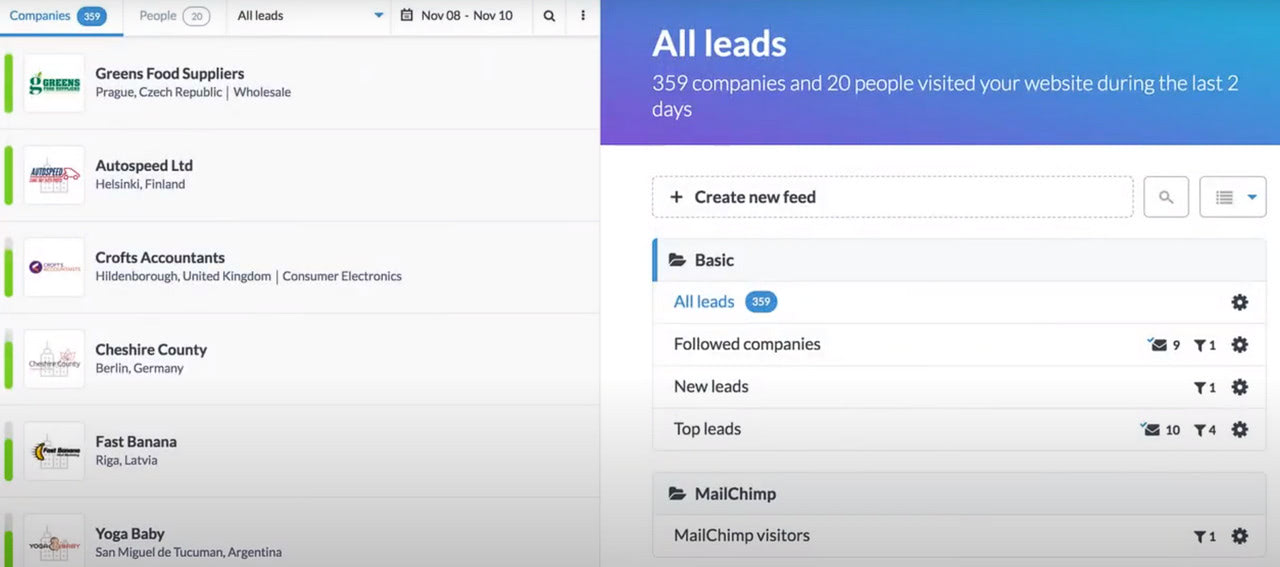
Dashboard from Free Analytics Tool, Leadfeeder
Last but not least
Last but not least reason to perform reverse DNS lookup is that the generated data comes in a meaningful and actionable form. Everyone can enjoy its potential, even a non-tech-savvy person who has just started the journey in marketing.
In addition, there are numerous third-party services available online that offer lots of extra information based on reverse DNS lookup. They make it much easier for marketing teams to identify potential leads and achieve success in numerous marketing campaigns.
Why Is It Important to Set up Reverse DNS for Your Company
Performing regular reverse DNS lookups provides companies much insight on visitors – it brings data that can be easily translated into leads. However, this is not enough to ensure the success of marketing campaigns on the web; it is also important to set up reverse DNS for your company.
As we have already noted, reverse DNS setup is not a requirement for your IT infrastructure. However, the absence of a reverse DNS setup may cause some drastic outcomes for your business.
The deal is that mail servers and ISPs verify reverse DNS setup when deciding what to do with email from your server. They check whether the IP address of the sending server has a reverse DNS record. Most servers consider it fraud if there is no record and reject emails from this source without any ado.
Suppose you run email marketing campaigns and constantly reach your subscribers through this channel. In that case, the absence of a reverse DNS setup may become a real roadblock since your emails will be rejected without any valid reason. Therefore, it is highly recommended to set up reverse DNS for your domain to ensure a high deliverability rate for your email.
That is not all; the reverse DNS setup may help to improve your SEO rankings since search engines penalize websites when multiple DNSs are linked to a single IP.
In addition, with reverse DNS in place, you contribute to the community and address common security issues. The basic setup may help other units to identify potential threats and fight cybercrime more efficiently, thereby creating a safe and transparent ecosystem for you and your customers.
How to Perform Reverse DNS Lookup?
So, reverse DNS lookup is an invaluable marketing asset. However, how to perform reverse DNS lookup? Everything is very simple. There are two ways to do this.
The first way implies the utilization of the command line. Since most operating systems (Linux, macOS, and of course Windows) can send requests to the Domain Name System to get a hostname based on an IP address, you can easily use some help of your PC or notebook.
For instance, Windows users can use such commands as “ping” or “nslookup.” The sample query looks like this:
ping -a w.x.y.z
or
nslookup 7.7.7.7
If the reverse lookup zone is in place, these commands return the domain name.
In Linux operating systems, you can use the “dig” command followed by the “-x” flag and IP address, like this
dig -x 7.7.7.7
If the command line scares you, you can always perform a reverse DNS lookup using online tools. There is a slew of them on the web. Let us consider the most popular ones.
Tools to Perform Reverse DNS Lookup
If you feel uncomfortable using the command line, or maybe you want some more information about reverse DNS lookup, then you can benefit from third-party services available online. There are many tools, but we have covered the most popular and trusted ones. Here they are:
- Unspam.email. Unspam is a professional email spam checker and heat map prediction. Among its numerous diagnostic tools, you will find reverse DNS lookup. It will give you good insights on reverse DNS record: whether it is appropriately configured and whether the mail server IP rDNS matches the HELO client-IP – things that are crucial for email marketers.
- MxToolBox. MxToolBox is another multitasking diagnostic service. Although most of its tools come with a fee, the reverse DNS lookup is available free of charge. Just enter the IP address either in an IPv4 or IPv6 format and enjoy the results.
- WhatIsMyIp. Do not judge the tool by its cover. Apart from performing forward DNS lookup, it also performs reverse DNS checks. It is easy to use – just enter the IP address.
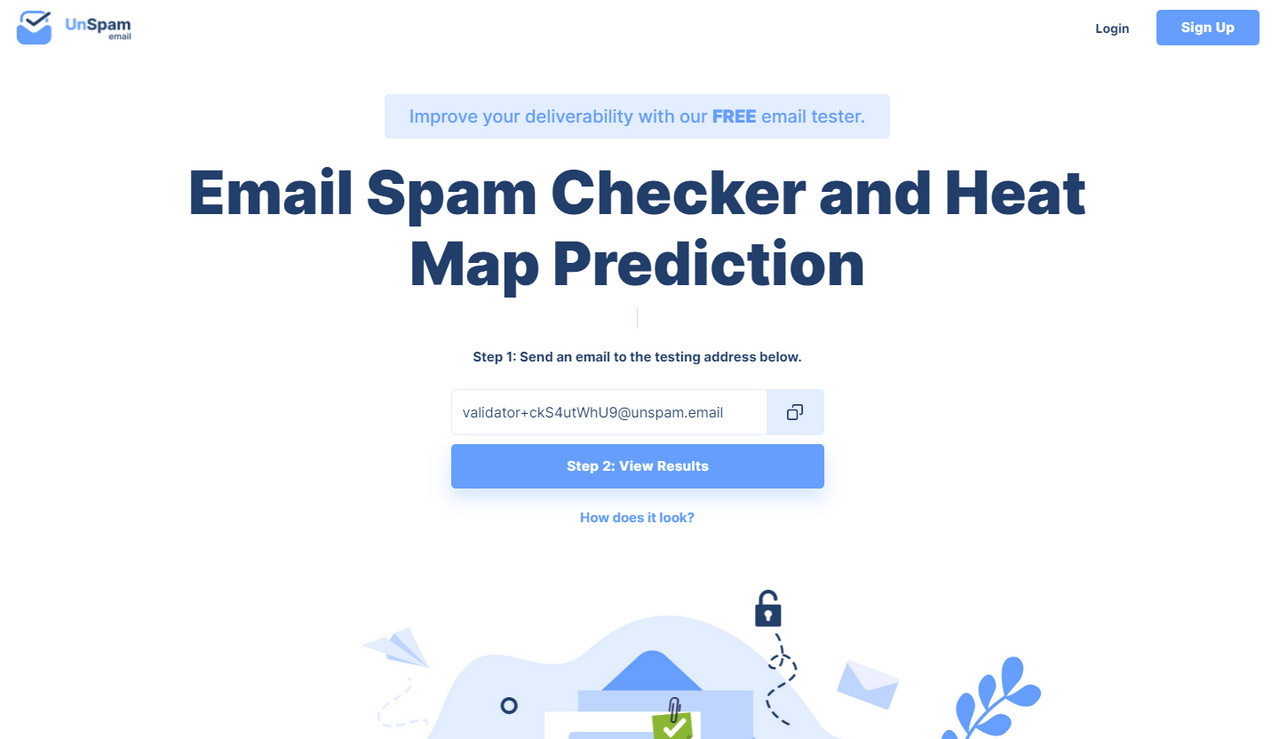
How to Set up Reverse DNS?
Reverse DNS setup may require some extra technical steps from you. However, they are simple. Moreover, in most cases, you will get assistance from various wizards provided by your hosting provider.
Before moving to the routine, it is essential to note that this procedure is only for companies and individuals with a dedicated IP address.
Step 1 – Gather Necessary Information
The first thing to do in order to set up reverse DNS is to figure out who your hosting provider is and whether you have access to DNS.
In the majority of cases, your hosting provider or ISP owns your IP block. However, if this is not the case, you can determine who the owner is by using free third-party services like IP WHOIS Lookup.
Step 2 – Define Reverse DNS Zone Name
After you define the owner of the IP block, you need to contact it and request a zone for your mail server’s IP address.
You may notice that this zone ends in “in-addr.arpa” and features an IP block with the octets reversed. This is an official syntax that you need to use to create your own reverse DNS zone.
The format is straightforward: it starts with an IP address with octets reversed and ends with “.in-addr.arpa”.
Follow this simple 5-step routine to define your reverse DNS zone name:
- Take your network IP address.
- If it is classless address block, then remove the netmask portion of the address. If it is a full address block, then you need to omit the last octet.
- Reverse the order of the remaining octets.
- Add ‘in-addr.arpa’ to the end.
- If it is a classless address block, then you need to insert the netmask back into the address using the dash (-) sign. Though, note, some Assigning Authorities may ask you to use a slash (/) to make it valid.
Consider the example to get a complete understanding of the procedure.
For example, you have an IP address 187.133.11.219/27. It is a classless address block. Therefore, you need to remove the netmask portion, aka “/27”.
So, now you have 187.133.11.219
After that, you need to reverse the order of the octets – 219.11.133.187
Then, add “.in-addr.arpa” – 219.11.133.187.in-addr.arpa
Finally, bring back the netmask portion using dash sign – 219-27.11.133.187.in-addr.arpa
Step 3 – Request Reverse DNS Delegation
Ask your ISP to delegate reverse DNS to your DNS provider. For this, you need to provide your ISP with the nameservers for your domain.
The nameserver for your domain could be found via a free tool called Dig Web Interface Tool.
If a hosting provider or ISP cannot delegate the reverse DNS, it will probably do everything by itself. Therefore, you can leave the reverse DNS setup to the supporting team and skip the next steps.
Step 4 – Create Reverse DNS Zone
Log into your hosting provider and find the DNS Menu in the control panel.
Click on it and select “Manage DNS.” It may be called something similar.
Click “Add domains.”
Enter the reverse DNS zone name that we have defined in step 2.
Step 5 – Create PTR Record
After you have created the zone file, you need to create a PTR record. It takes two steps in your control panel.
Open the corresponding tab. Depending on your provider, it may be called a “PTR record” or something alike.
Enter the final digit of the IP address into the “name” field.
Enter the domain name you would like the IP address to map into the “canonical name” field.
Step 6 – Take Your Time
Every change in the DNS server requires 24-48 hours to come into effect. Setting up reverse DNS is no exception. You need to wait for two days to ensure the reverse DNS setup starts working as intended.

DNS Record for Unspam.email
Conclusion
I hope you have got an understanding of what is reverse DNS lookup by now.
To sum up, it is the querying technique that determines the hostname associated with the IP address. Despite its original use, aka network troubleshooting, it has become quite popular among the sales teams.
As it turned out, reverse DNS lookup is increasingly beneficial for organizations worldwide, especially those in the B2B sector. It provides invaluable information for marketing teams that can be easily translated into conversions and sales.
On top of that, reverse DNS setup provides an extra layer of protection in the connection between the company and users. It helps to fight cybercrimes and create a safe environment and ecosystem.



